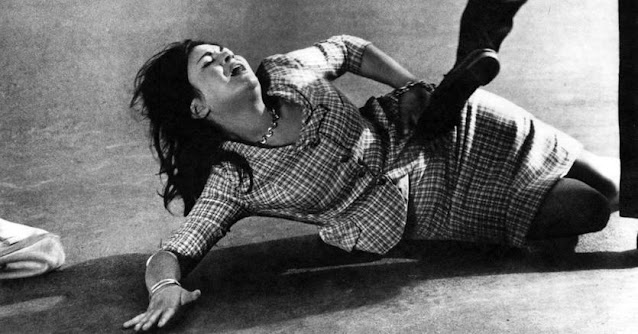Recently watched: Story of a Love Affair (1950) aka Cronaca di un amore. Trust me - never was a title more bitterly ironic! A bleak Italian neo-realist interpretation of American film noir very loosely inspired by The Postman Always Rings Twice, Love Affair represents the feature film debut of art cinema virtuoso Michelangelo Antonioni (1912 - 2007). His icily detached perspective, ambivalence towards his characters (he certainly never invites sympathy for them) and emphasis on desolate cityscapes are already present and correct. If Love Affair initially feels a bit inconsequential and unengaging, persevere – the tension really builds as it proceeds, and the ending is devastating. And remember: Antonioni wants you to feel alienated!
Love Affair is a meditation on guilt, consequences, human weakness and fatalism. Smouldering nineteen-year-old Lucia Bosè (whose sultry dark looks anticipate Isabella Rossellini and Natassja Kinski) is swathed in furs, veils and spectacular haute couture ensembles as Paola, the petulant and spoiled young trophy wife of millionaire Milanese industrialist Enrico (Ferdinando Sarm). (Antonioni ensures we repeatedly observe Paola snap abrupt orders to her staff: “Get me cigarettes!” “Get me a martini!”). When she’s reunited with Guido (ruggedly handsome dreamboat Massimo Girotti), a lost love she hasn’t seen in years, Paola begins scheming for them to run away together. But Guido is penniless, and she can’t countenance the thought of abandoning the fabulously lavish lifestyle she’s become accustomed to. Soon Paola starts hinting the solution is for Guido to murder Enrico …
To complicate things: the jealous Enrico
has hired a private detective to investigate Paola’s past. And Guido and Paola
share a painful dark secret from years earlier: they may have killed before! At
the very least, their amoral self-absorption contributed to a tragic accident. The
camera swoons over the combined beauty of Girotti and Bosè. They are perhaps
the most exquisite couple in Italian cinema history right up until Antonioni teamed
Monica Vitti with Alain Delon in L'Eclisse in 1962. (Antonioni and Bosè would
reunite in 1953 for the even better The Lady Without Camelias).



































